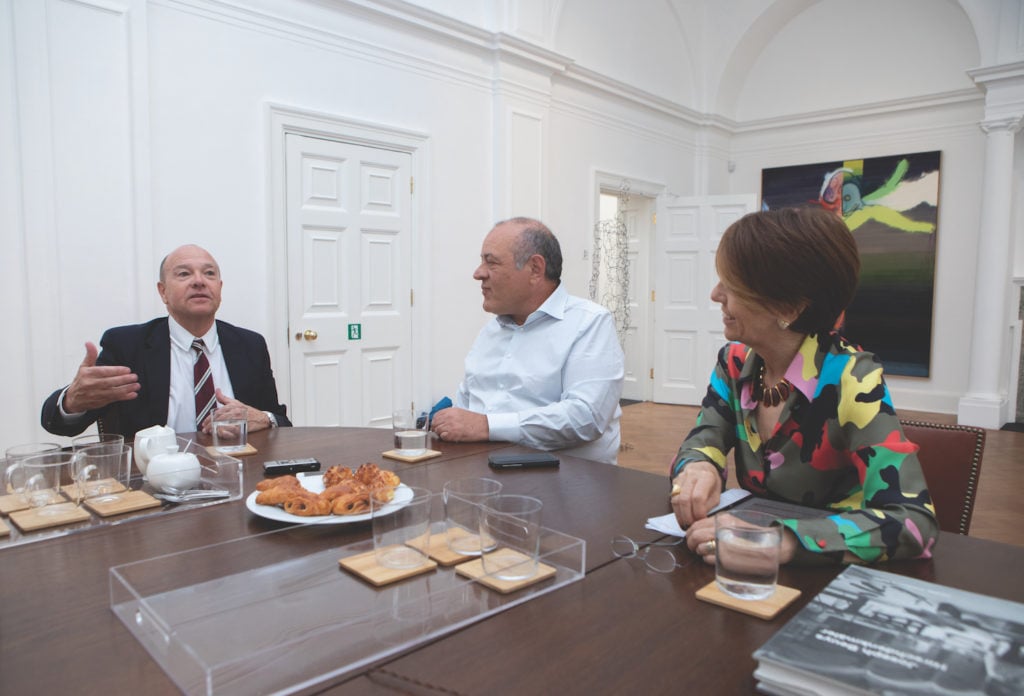This story originally appeared in the fall 2019 artnet Intelligence Report.
Thirty years ago, buying contemporary art was the leisurely pursuit of a cosmopolitan elite. Today, it is more like a competitive spectator sport. The massive growth of the market for new art—driven by the spread of international art fairs, the proliferation of auctions, and the establishment of mega-galleries on multiple continents—has been fueled by the arrival of a wave of new buyers. Today, hedge-fund investors keen to diversify their portfolios, property developers looking to add cultural cachet to their buildings, deep-pocketed collectors from non-Western emerging economies, and those simply wanting to gain access to a glitzy social scene all vie to acquire contemporary art.
Several of these new buyers have amassed massive collections—often in a remarkably short time—and put their spoils on public display in cities from London to Shanghai to Hobart, Tasmania. We have not seen such an epic period of private gallery construction since industrialists like Solomon Guggenheim and John Paul Getty were building museums bearing their names in the mid-20th century.
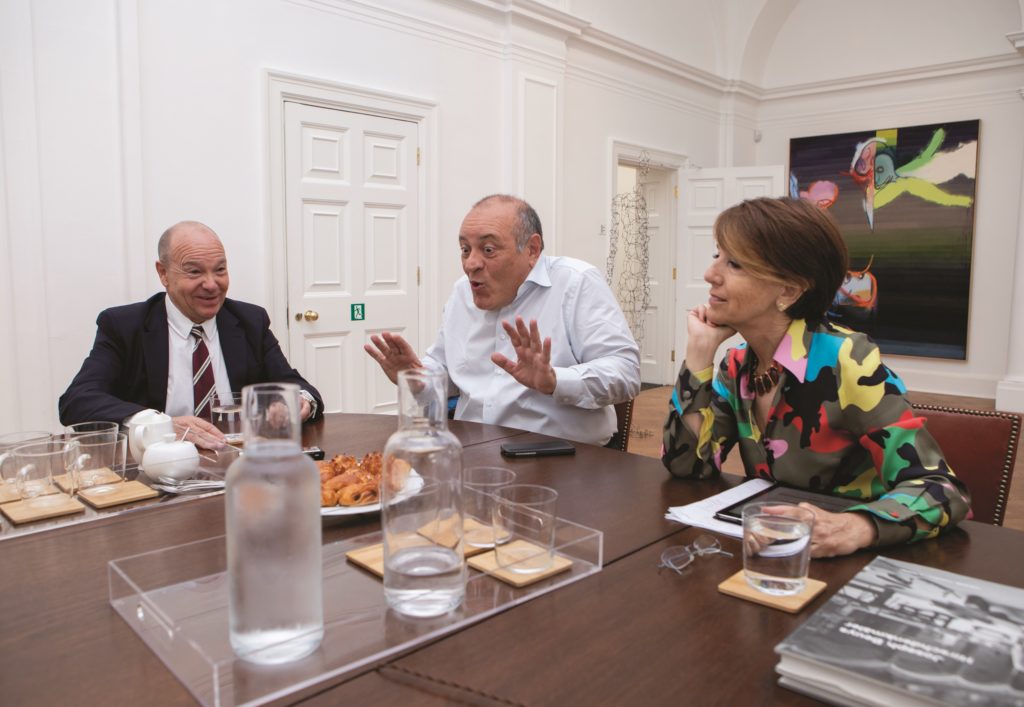
From left: Dr Paul Ettlinger, Dimitri Daskalopoulos, Patrizia Sandretto Re Rebaudengo. Photo © David Owens Photography.
To better understand this critical moment, we spoke to three patrons who are each at a different stage in their collecting careers: Patrizia Sandretto Re Rebaudengo of Turin, Dimitris Daskalopoulos of Athens, and Paul Ettlinger of London. The trio met one recent morning in Mayfair over coffee and pastries to discuss the rise of private collector-run museums, changes to the art market (and how they negotiate them), and the future of their own collections at a time of increased scrutiny of private collectors.
New collectors entering the market today often complain about not getting access to the work they want. They may have the money to buy it, but if a gallery doesn’t know them, they are unlikely to get the opportunity. What was it like for you when you first started collecting?
Patrizia Sandretto Re Rebaudengo: When I started in the 1990s, the market was very slow. I remember coming to London and all the galleries were so friendly and welcoming—they introduced me to artists, they took me to their studios. I’m not sure if it’s the same if you start to collect now and a gallery doesn’t know you.
Paul Ettlinger: It might be similar if you’re collecting very young artists from younger galleries, because they’re looking to establish relationships with collectors who are going to buy that artist’s work in depth. But if you’re going for a more established contemporary artist, unless you have an advisor or unless the gallery knows you, it is quite difficult to walk in off the street and just buy art, regardless of how much money you have. At the very beginning of my collecting, my advisor gave me access to galleries, and that was really important because in the early days I probably wouldn’t have been able to buy what I wanted.
Dimitris Daskalopoulos: I had the opposite experience, because I have always bought the things that nobody else wants, so I have always had easy access. I had the gratitude of galleries who were able to get rid of some of their huge installations that are so hard to sell. One of them confided in me that when I bought a specific artwork, they opened a bottle of champagne as soon as I left the gallery.
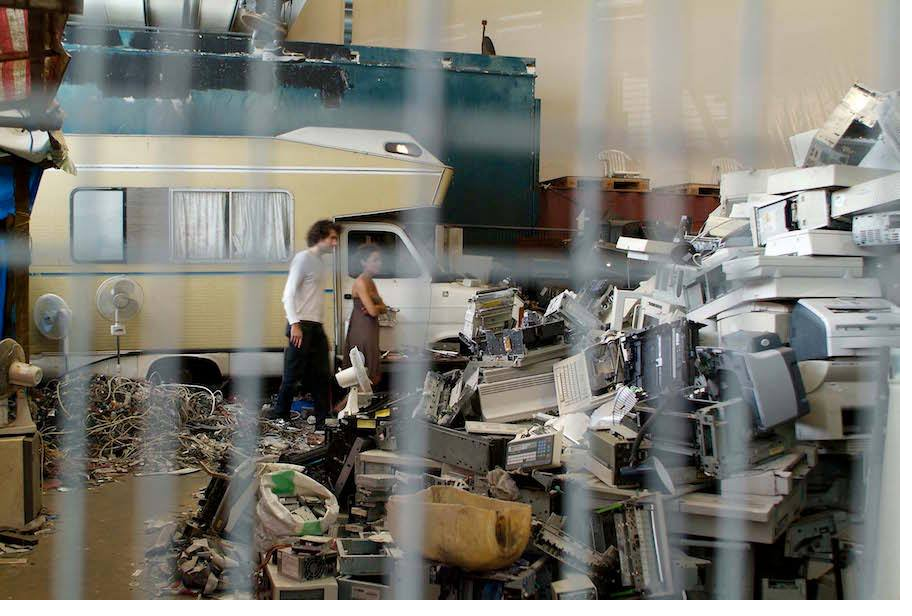
Christoph Büchel’s Unplugged (Simply Botiful) (2007) when it was part of Art Basel’s Unlimited. Courtesy Art Basel.
You’re one of the few private collectors I can think of who has bought a Christoph Büchel installation.
Daskalopoulos: Which takes two containers to store. We’ve shown it in Athens once, for a two-month period as part of a summer festival. I’m glad we have it, but it’s very hard to show.
And when you show it, presumably Büchel has to come and supervise the process?
Daskalopoulos: Oh, yes—it costs more money again to put it up.
Over the past 15 years, an increasing number of collectors have opened galleries to show their art. Chris Dercon, the former director of Tate Modern and now head of the Grand Palais in Paris, has said that collectors should be supporting public museums instead of establishing their own spaces, because they do not have the accumulated expertise of major institutions. What’s your response?
Re Rebaudengo: It’s true that many private museums have opened in recent years. And many have already closed. Some collectors opened a space because it was fashionable and then realized that running a gallery is not an easy job. But I think we have to consider where these private spaces are located. In Italy, the first national contemporary art museum, MAXXI in Rome, opened in 2010. It was important that many private collectors decided to establish spaces long before that, because in many places it was the only way for the public to see contemporary art. Maybe in cities where there are many important museums, it’s not so necessary for private collectors to open a museum.
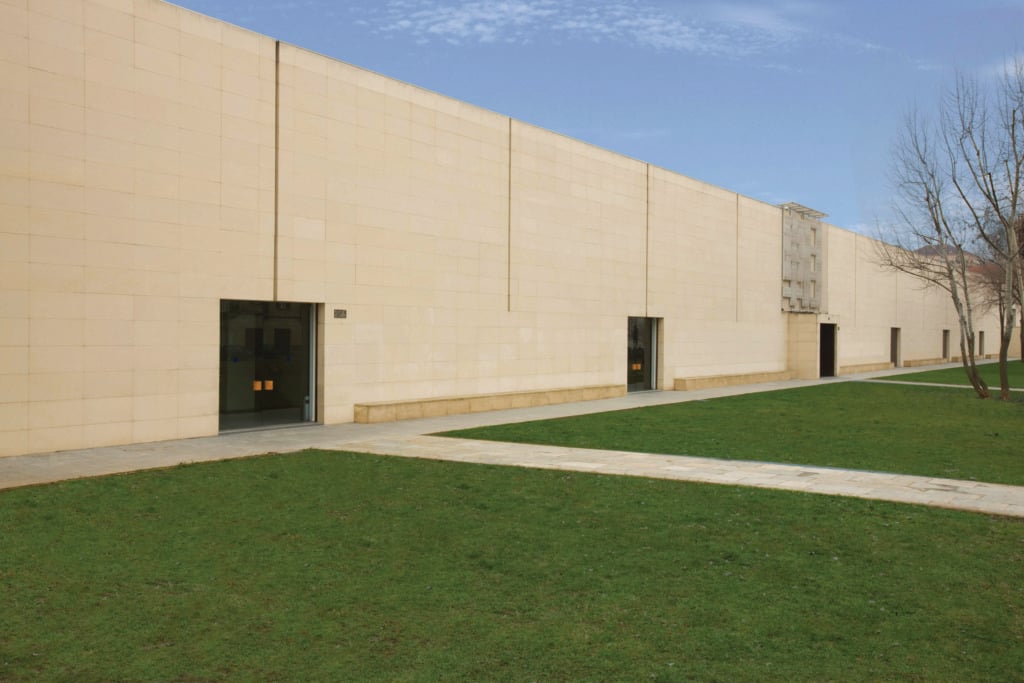
Fondazione Sandretto Re Rebaudengo, Turin, Italy. Photo: Maurizio Elia.
Ettlinger: I don’t agree with Dercon, because many collectors support museums and institutions while also forming their own collections. Museums are very welcome to borrow the works we collect, and some of us bear the expenses of that, like shipping and insurance, when we lend to them. So, in reality, there isn’t a dichotomy there. The more that art that can be shown in accessible places, the better. We shouldn’t be criticizing the fact that people want to have their art on public display. There might be a point in asking how accessible individual private museums are. Are they only open one day a year because they’ve been set up to reduce one’s taxes? But that is a different point.
Daskalopolous: It’s important to point out that in Europe we generally don’t have tax benefits for giving art to museums or opening foundations—in fact, we have tax burdens. When you give something worth €10,000, for example, to a charitable organization or museum in Greece, you then also have to give half a percentage point to the state as a donation tax.
Re Rebaudengo: In Italy, it’s the same. We don’t have any fiscal advantages. For tax purposes, my foundation is considered a commercial activity. It’s very expensive to run.
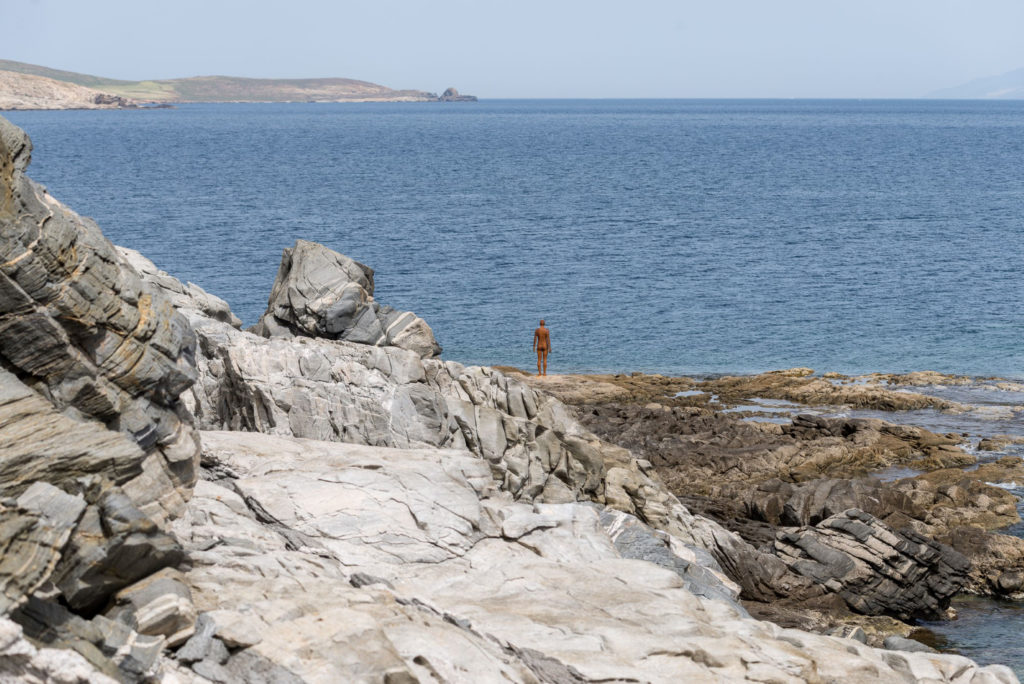
“SIGHT | ANTONY GORMLEY” Archaeological site of Delos, 2019 | © Oak Taylor Smith | Courtesy NEON; Ephorate of Antiquities of Cyclades & the artist.
Daskalopolous: I don’t think that it’s less expensive to organize pop-up shows instead. My team tells me that every time we do a project, it’s like setting up a museum and then taking it down. For our current project on the island of Delos, we will spend two months after the installation closes taking down 29 sculptures by Antony Gormley. I don’t have a gallery for my collection because I think it’s more valuable to do different projects in different places where they are needed.
And when I think about the future of my art in the long term, I think public institutions are definitely much better placed to keep whatever is valuable in my collection in dialogue with what will come in the future, and to preserve it so it can be shown. Public institutions are much better than any structure that we, as individuals, can leave behind. I think I’ve created a collection which has a theme and coherence. I don’t need to be adding to it anymore. Now I want to devote the rest of my activity around the collection to give these artworks and the artists who made them some kind of future.
And how will you do that? Can we expect to see some of your works in the collection of Tate or MoMA?
Daskalopolous: Maybe, yes. Unfortunately, there are some artworks that we as private collectors own that probably do not have a future because they are too big to be shown or too difficult to store, so they may stay in the dark forever. The question is: What do we do with them? How do we work with museums or with the artists themselves to find a destination for these works?
Re Rebaudengo: I think there is a solution. In 2015, the city of Sheffield [in England] organized a great event called “Going Public.” They invited four collectors, including me, to show part of their collections there and then organized two days of talks. The idea was to show works that collectors keep in storage, or that they only loan to important museums in major capital cities. We should start to imagine that collectors could give their art to places like Sheffield for free. The ownership would remain with us, but if cities like Sheffield have spaces to display works, they could show our collections. I think it’s important that people should be able to see the art we own.
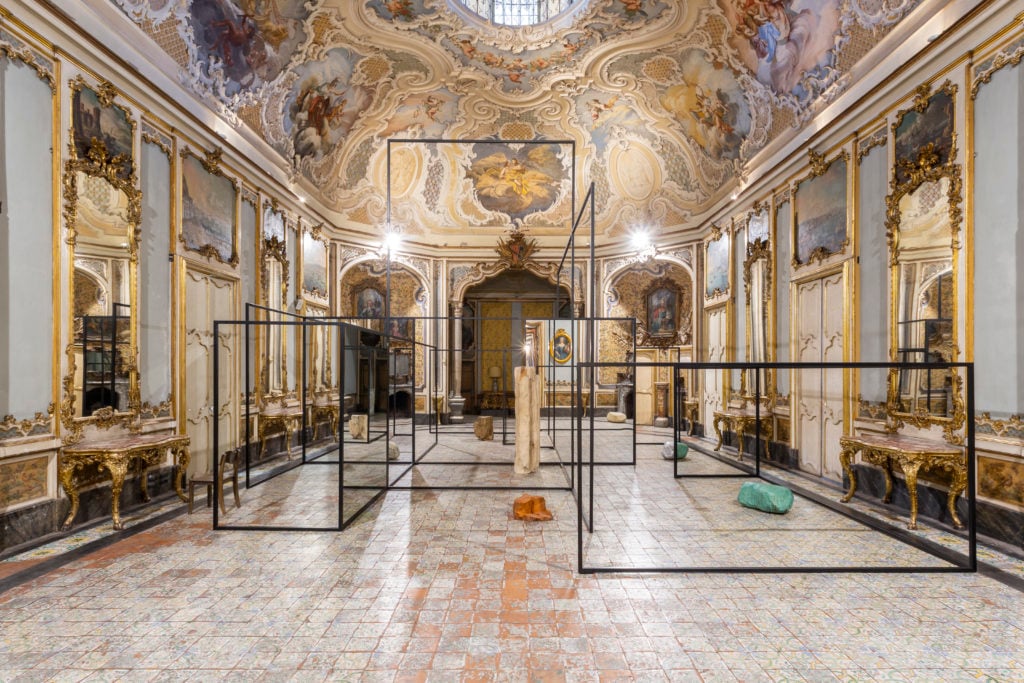
Alicja Kwade, WeltenLinie (2017), installation view, Palazzo Biscari, Catania. On loan from Patrizia Sandretto Re Rebaudengo.
Daskalopolous: That is the most important thing. That’s why I’m worried about this. I am very open to lending. I consider my collection a repository, accessible to anyone. But it’s very rare to get loan requests for large installations. And even if you’re willing to gift them to a museum, I think it’s sometimes a burden for institutions, because these large works need storage and insurance, and everybody’s money is running out.
Re Rebaudengo: I am also increasingly thinking about the future of my collection. I really hope that it can remain together. Public museums have a lot, a lot, a lot of work that they cannot show. So, in the end, to give art to museums for them to put it in storage is not ideal. I have a space, and I hope to keep my collection on display there. I also have two sons who sit on the board of my foundation and are very involved in art, so I’m quite positive about my collection’s future— although you never know what will happen in the long term.
Paul, would you like to open a space?
Ettlinger: Yes, sooner rather than later, although I suspect it’s going to be later. I would love to have a space where we have our works out of storage. We do show the art in our home to family, friends, and visitors and organize evenings with artists, and we very much enjoy this. We looked at a former printing facility in Margate as a potential home for the collection, but if I’m going to put my works on public display, I want to have easy access to them so I can go and see them—that’s part of the passion for me. I don’t want to have to get on a train.
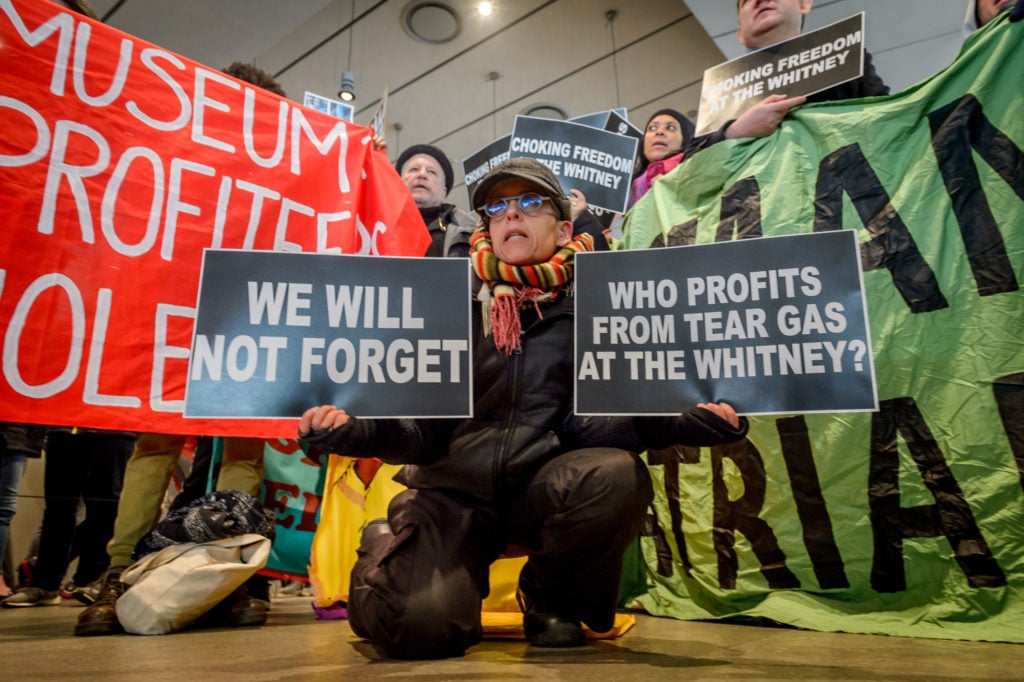
Activists took over the lobby at the Whitney to protest Warren B. Kanders. (Photo by Erik McGregor/Pacific Press/LightRocket via Getty Images)
A major shift we’ve seen over the last 18 months is the way that museum benefactors are being scrutinized, from the Sacklers to Warren Kanders at the Whitney, and the way institutions are systematically being pressured to sever ties with patrons who are deemed problematic. Do you think this will put rich people off from donating to museums?
Daskalopolous: Is there such a thing as purely clean money? How do we define that? If we open this discussion, what mechanism will we establish to define what clean money is?
The discussion is open, so the question is: How do museums respond to it?
Daskalopolous: The thing I fear about people in important jobs, needing to respond very quickly under the pressure of activism and social media is that we will enter a climate of fear—fear of doing anything new, for example—because we’re trying to be too correct in everything. This will stifle creativity. I think what is wrong with all this is that these activist groups are too quick to make too big a fuss without actually proposing a solution or an alternative for the problem at hand. They are also outsourcing their cause, which is something I totally disagree with.
What do you mean by that?
Daskalopolous: I mean that instead of directly targeting what they are against, they put sensitive intermediaries like museums in the [firing line] to blackmail them into doing something that they hope will bring about the good cause they’re campaigning for. They don’t realize that they may be depriving themselves and their peers of the benefits of money that has ended up being used for good causes and for the public.
Ettlinger: I slightly disagree with that. Because you could be saying that it’s acceptable to launder money: “If you do a bad thing but then later do a good thing by donating money to a museum, it makes up for the bad thing you’ve done.” But it’s a complicated issue. We all know about the scandal of opioids in America today. But at the time the Sacklers gave money to museums, we were not so well informed, and that money was accepted by museums in good faith.
Do you think this increased scrutiny will stop people from donating to museums?
Ettlinger: Almost certainly. If people have something to hide, they will think twice about donating. But maybe that’s not a bad thing. Maybe this is where private museums come in. Maybe these individuals will set up their own private museums instead.
Daskalopolous: It goes beyond individuals donating to museums. With some corporations, for example, the objection about accepting their money is that they do not do enough for a specific cause, a good cause that is dear to the public, such as climate change. What is enough? Who defines it? If, as a corporation, you suddenly decide, “We’re not doing enough—we’re going to double what we’re doing,” will that be enough? Climate change is very important for all of us, and certainly we’re not doing enough, because we have not solved the problem. But let’s not destroy other good things in society because we have a good cause to advance. If donors become afraid and stop giving money to museums, who is going to lose? The public. So in pursuing a good cause, we’re maybe doing wrong somewhere else. Activism and idealism are useful in pushing us to do more and sooner. But in themselves, they should not be judgment mechanisms or justice mechanisms.
Let’s turn to the workings of the art world, and the market in particular. You have all been buying art for many years. Are there some aspects of the market that you find antiquated and unprofessional?
Ettlinger: It would be helpful to have more understanding of how galleries work and how they pay their artists. A young artist recently told me he’s not expecting to get paid by his gallery for works of his that it sold. I was quite saddened by that, and I think there’s sometimes a problem with the way galleries and their artists handle their relationships; it seems as if some of them don’t have written agreements. Maybe that’s why we, as collectors, need to look after the artists whose work we collect and help them so that they feel supported.
Re Rebaudengo: Everything in the art market happens so quickly now. The day before a fair opens, galleries send us PDFs of all the works that will be for sale there. If you don’t immediately call or email the gallery and say, “I want this,” then when you arrive at the fair they’ll tell you, “I’m sorry, it’s sold.” Before, we had the time to think about a work, discuss it with our advisor. Now, there’s no time.
Daskalopolous: I think the fundamentals of the art market have never changed. We are talking about creativity that there is no objective value to. We are talking about a market that’s based on intelligent people deciding to put their money somewhere of their own free will with a handshake. These fundamentals have never changed and never will. It is unorganized, it is inexplicable, but it keeps happening. If I feel sometimes I’ve overpaid for something, I would not blame anyone but myself. I would never go back to the gallery and say, “You overcharged me.”

Installation view of “Oscar Murillo: Collision/Coalition” at the Shed. Photo: Stan Norten, courtesy David Zwirner.
One of the things people complain about in the art market today is the speculators, who buy just so they can flip work and make a profit.
Daskalopolous: Again, I say it’s a free market with intelligent players acting of their own free will buying and selling art. We have organized stock markets to speculate legally, so we shouldn’t be surprised that people do it in the art market.
It’s not great for the artists.
Daskalopolous: That is something we need to correct. We should find a way for artists to benefit from secondary sales. I know some people who say that when they resell art they give a portion of the profit to the artist.
Re Rebaudengo: You say the market has not changed, but it’s a lot bigger than it used to be. In the 1990s, it was much smaller, and prices were not like they are today. If you collect the work of young artists, as I do, the market has changed quite a bit, because today some of these artists are invited to join important galleries at the beginning of their career, and this can be problematic. The moment of speculation is not when the artist joins Zwirner or Gagosian, it’s when rumors start circulating about a particular artist’s joining a large gallery. This is the moment in which collectors can buy their work for a good price and you can make a lot of money. Take Oscar Murillo. You could buy his work for just a small amount of money before, and now that he is with Zwirner, prices have more than doubled.
Daskalopolous: Yes, but how many collectors have bought work by young artists and then the work never went anywhere? There are countless cases. The press only writes about the success stories, not the multitude of unsuccessful ones. There are a lot of ways to influence some artists’ prices upwards, but in the end, I think it has been proven throughout the centuries that the art that lasts and becomes valuable over time is the better art.
Re Rebaudengo: We do have to think about what happens when artists leave the small galleries that supported them at the beginning of their careers. This is a very big problem. In the [European] football world, when a young player moves to another team, there is a transfer fee payable to the team he is leaving. In the art market, there are no transfer fees—so if you are a young gallerist, you lose out. Maybe you’re lucky because you have some works by the artist in storage so you can benefit from the price rise: But if you don’t, you’ll lose everything you worked for.
Ettlinger: I agree. I have often thought there should be transfer fees paid by big galleries to smaller ones, but it is also up to the artist to ensure fairness exists. However, big galleries can dictate their own terms. In Oscar Murillo’s case, even though he joined Zwirner, he does still work with the smaller London gallery Carlos/Ishikawa, which has been with him since the beginning.
Daskalopolous: So the art market should function more like soccer?
Re Rebaudengo: Yes. How many young galleries have closed? They started with artists that are well-known today, yet the gallery that discovered them is unable to continue to operate. It’s also not good for the artists to join a big gallery when they are too young, because when you’re in a small gallery, you can experiment, you can fail, you can grow. When you’re with a big gallery, you have to constantly prove that you are good. Auctions can also be a problem. When I started buying art, it was mainly Impressionists that were selling at auction. Now young artists are there too, and it’s rarely good for them. In the primary market, your work might be selling for €50,000 and then, six months later, your work is suddenly selling for €500,000 at auction—and then what happens? How do you ensure people don’t buy your work from the gallery just to flip it at auction? This is also a very big change.
ABOUT THE COLLECTORS
Patrizia Sandretto Re Rebaudengo
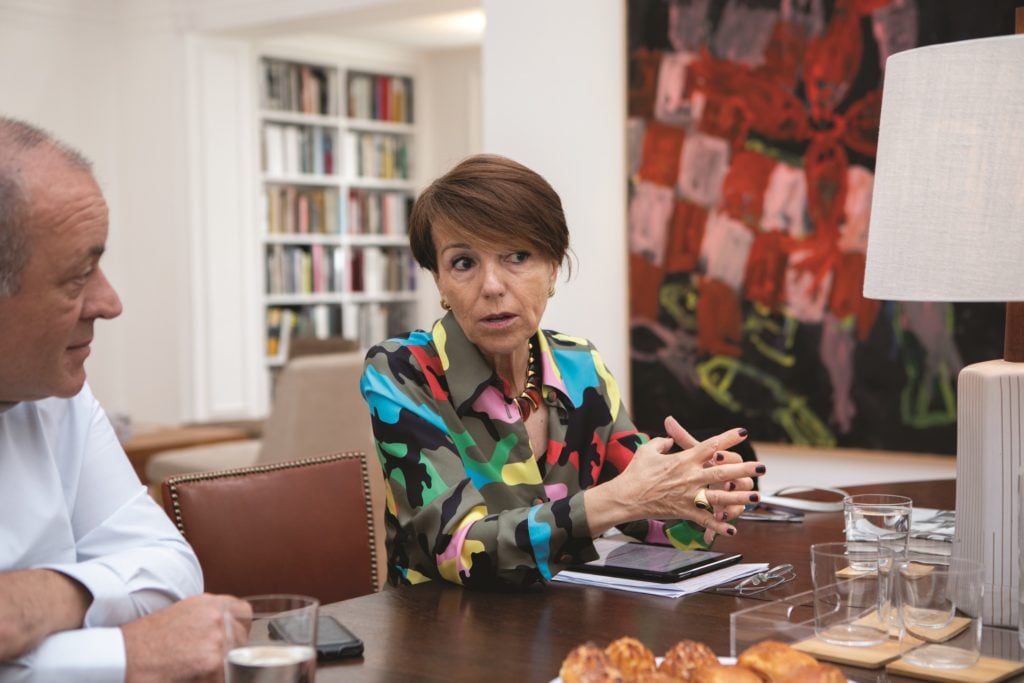
Patrizia Sandretto Re Rebaudengo. Photo: © David Owens Photography.
Patrizia Sandretto Re Rebaudengo began buying art on a trip to London in 1992. Just three years later, she established a foundation to support young artists with her businessman husband, Agostino, scion of an aristocratic Piedmontese family. Today, she operates two spaces for her collection and programming: one in an 18th-century
palazzo in Guarene, 30 miles southeast of Turin, and one in the city itself. A keen commissioner of new art, she is also a generous lender of works from her 1,500-piece collection, which includes major pieces by Ian Cheng, Josh Kline, and Lynette Yiadom-Boakye. She has also amassed a trove of some 3,000 photographs, ranging from historic images of Italy and early daguerreotypes to the work of Cindy Sherman.
Dimitris Daskalopoulos
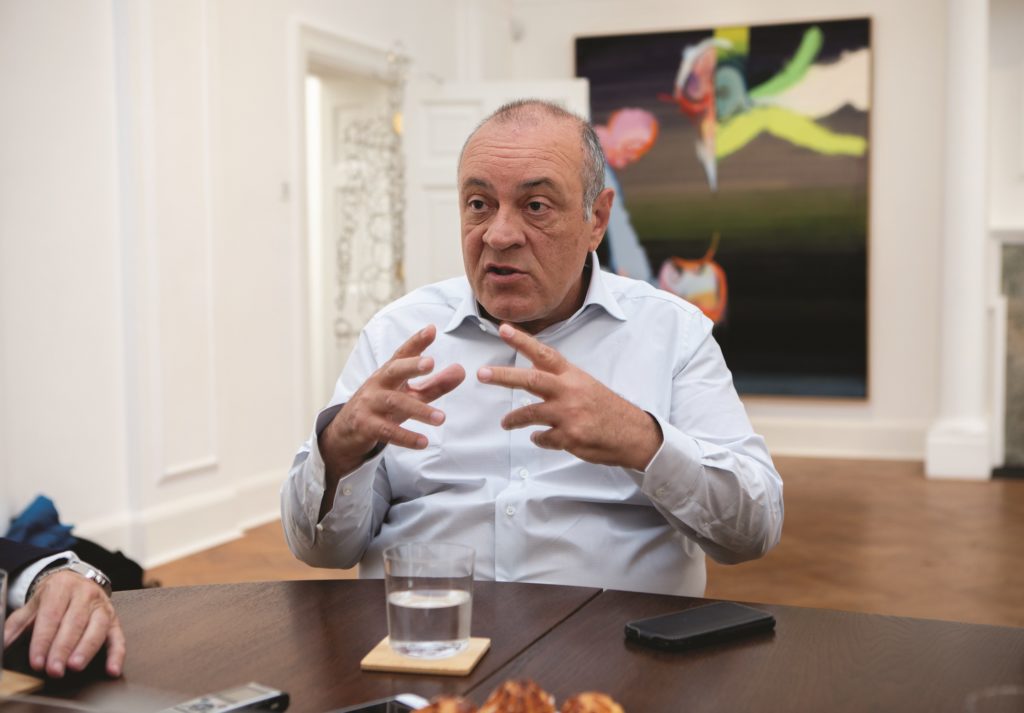
Dimitri Daskalopoulos. Photo: © David Owens Photography.
Dimitris Daskalopoulos, a Greek entrepreneur who founded and runs the financial services and investment company DAMMA Holdings SA, has been collecting contemporary art for around 25 years and owns some 500 works. He favors large, difficult installations such as the Swiss-Icelandic artist Christoph Büchel’s 5,000-square-foot Unplugged (Simply Botiful) (2007), which contains a bar, sleeping areas, and vast mountains of junk. In 2013, he launched NEON, a foundation that organizes pop-up art shows around Greece. (The organization recently placed 29 sculptures by Antony Gormley on the uninhabited island of Delos.) He has shown his collection at the Whitechapel in London, the National Galleries of Scotland, and the Guggenheim Bilbao. He serves as vice president of the board of the Solomon R. Guggenheim Foundation in New York.
Paul Ettlinger
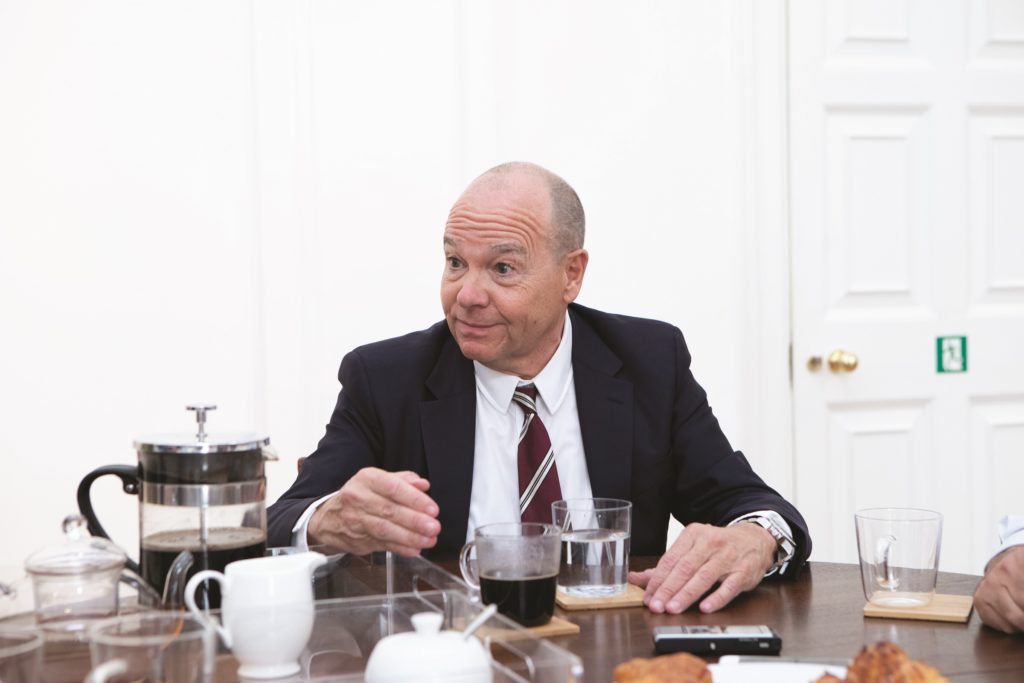
Dr Paul Ettlinger. Photo: © David Owens Photography.
Paul Ettlinger, a British doctor who founded and works at the London General Practice and the London Global Practice in Harley Street, has been collecting contemporary art for around 10 years, with a particular focus on the work of young, emerging artists. An early collector of the work of the Colombian artist Oscar Murillo, he helped fund a show of the artist’s work at the South London Gallery in 2013. Ettlinger’s 250-piece collection also includes work by such established artists as Sarah Lucas, George Condo, Rebecca Warren, and Isa Genzken.
This story originally appeared in the fall 2019 artnet Intelligence Report. To download the full report, which has juicy details on the most bankable artists, a guide to the market for contemporary African art, and a look inside the shrinking business of auction guarantees, click here.
